American Beech Tree (Fagus Grandifolia) Profile
Written by Iris
Dec 07 2021
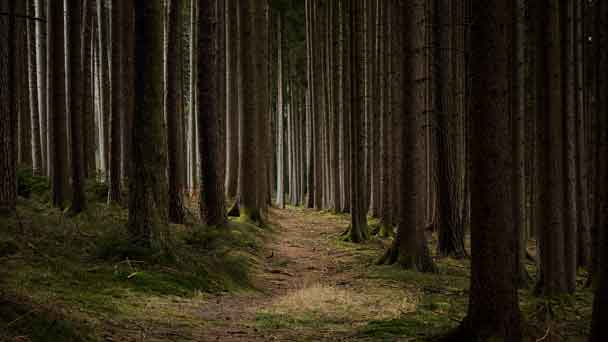
American Beech tree (Fagus grandifolia) is a unique and graceful tree in Kentucky and throughout eastern North America. In early spring, new leaves of American Beech tree grow feathery tassels from buds. Beautiful leaves take on a golden bronze color in autumn. The beauty, spreading form of American beech is superior to that of other beech trees and is attractive all year round.
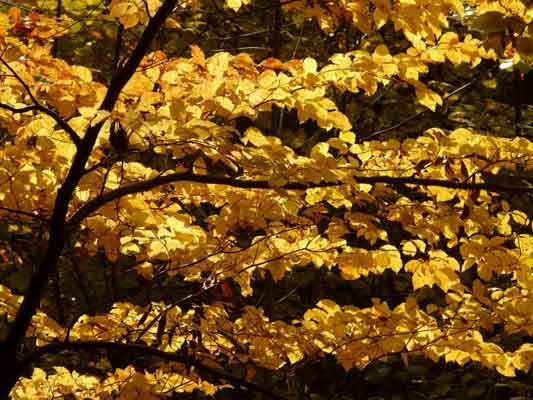
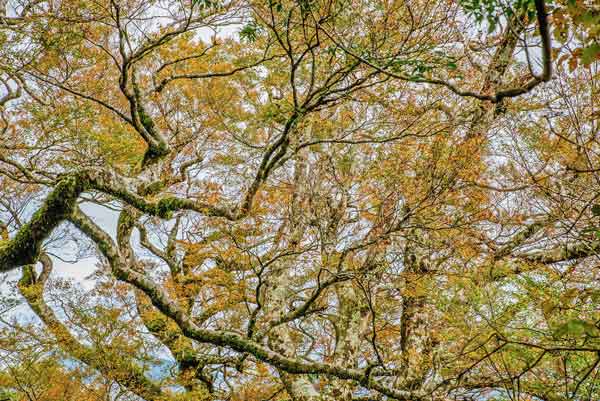
Huge forests of American beech were thriving in Ohio, Kentucky, Indiana and central Michigan when colonists arrived. The beech tree's exacting requirements for growth made it an indicator of good farm land and as colonists began clearing land, the beech disappeared.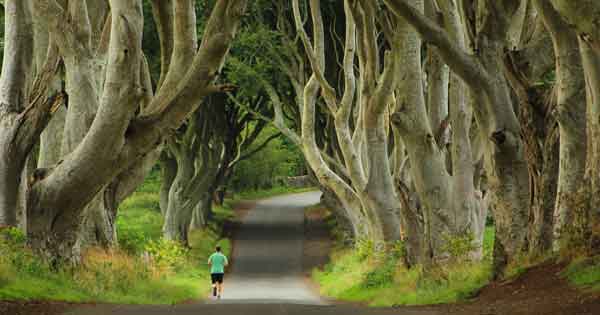
Grasp a handful of sand. Dip the sand briefly underwater to moisten it. Place the sand in a plastic zipper bag. Repeat this process to fill the bottom one-third of the bag with moist sand.
Place the dried beech seeds into the bag. Push the seeds down into the sand, fully covering their surfaces. Remove excess air from the bag, then seal it. Place the bag in a refrigerator with a constant temperature of 41 degrees Fahrenheit. Leave the bag in the refrigerator for 90 days.
Pour 2 parts peat-free potting soil and 1 part sand into a bucket. Mix the materials together to combine them thoroughly. Add water slowly while stirring until the media is thoroughly moist but not soggy. Fill a 4-inch pot to 1 1/2 inches below its top with the media. Prepare one pot in this manner for each beech seed you wish to plant.
Remove the bag of seeds from the refrigerator. Pull the seeds out of the sand and rinse them off in water. Place one seed in the center of each pot. Cover each seed with a 1/2-inch-deep layer of media. Tamp the media down over the seed.
Move the pots into bright filtered sunlight once the seeds germinate. Water when the top 1 to 2 inches of soil becomes dry. Turn each pot one-quarter turn once per week to encourage even plant growth.
Transplant seedlings into larger pots
Transplant the beech tree seedlings into 1-gallon pots once they outgrow their current pots.
Spread a 2- to 3-inch layer of sphagnum peat moss across the planting area. Mix the moss into the top 6 to 8 inches of soil.
Dig a hole slightly shallower than the depth of the root ball and twice as wide.
Place the beech tree root ball in the hole and remove the covering. Backfill the hole with the soil and moss mixture, adjusting the tree so that the top of the root ball sits approximately 1 inch above the surrounding soil and the top roots are exposed.
Water the tree thoroughly after planting and keep the soil moist, but not wet, watering weekly until the tree is established. Resist the urge to fertilize your beech tree until it is well established.
Apply a 3-inch layer of organic mulch, such as wood chips or straw around the base of the tree, but not touching the trunk.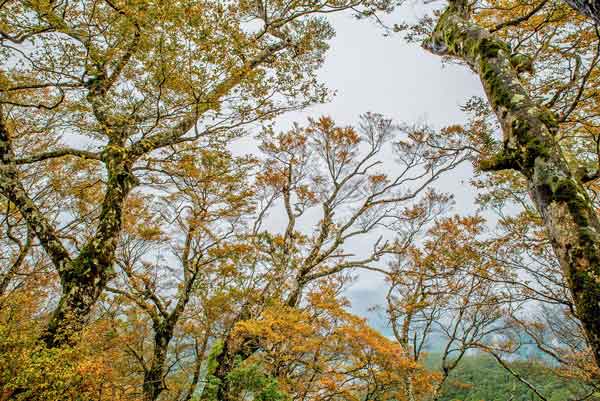
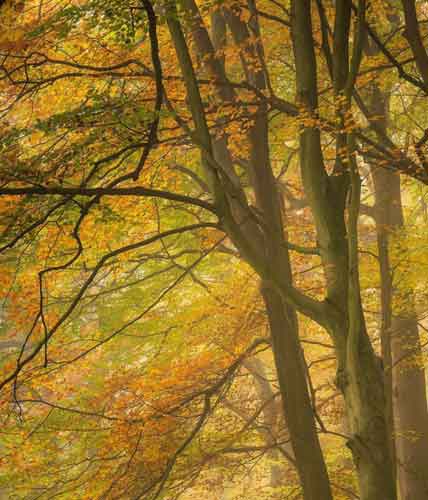
On the other hand, the European beech lumber has a light cream pink or brown color. Like the American Beech, the steam process gives the beech wood lumber a yellowish hue, but during production, the veneer comes out much darker. There is also a wide range of European beech trees known for their various orange hues.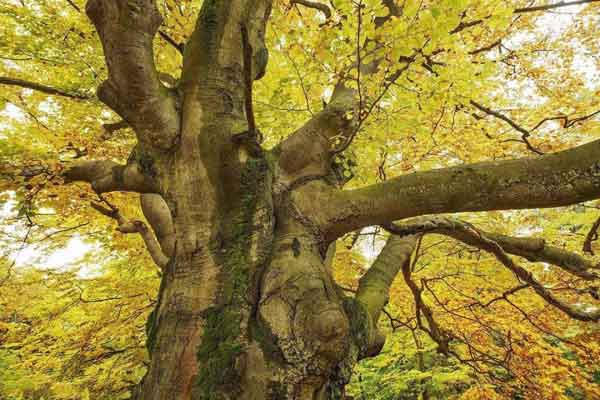
Aphid colonies on the lower branches can be dislodged with a strong stream of water from the garden hose. Colonies are often disposed of by predatory insects. Borers such as flat-headed appletree borer or two-lined chestnut borer bore into trees weakened by stress. Prevent the insect infestations by keeping trees healthy with regular fertilization and irrigation in dry weather. Regular inspections of the trunk and branches are suggested for early detection of scales. Beech scale can be devastating to trees in the northeastern United States. Certain caterpillars can be controlled with sprays of Bacillus thuringiensis. Insect identification allows proper spray recommendations to be made.
Diseases
Usually none are serious provided soil is not compacted and is well-drained. Several fungi cause leaf spots but are generally not serious to warrant chemical control. Powdery mildew causes a white coating on the leaves. The disease is most common late in the season. Bleeding canker forms cankers from which a brownish liquid oozes. Crown symptoms include leaves of smaller size and lighter green color than normal. In severe cases the leaves wilt and the branches die. Avoid feeding with high nitrogen fertilizers as it seems to worsen the condition of infected trees. Beech bark disease occurs when the feeding site of woolly Beech scale is invaded by a fungus. The fungus kills the bark and in the process, the insects. There are no satisfactory controls for the fungus. Control the disease by controlling the scale with a horticultural oil. Cankers infect, girdle, and occasionally kill branches. Prune out the infected branches. During periods of high temperatures and low rainfall Beech may scorch. Make sure trees are adequately watered and mulched.
American Beech Tree PictureAmerican Beech Tree InfoAmerican Beech Tree HistoryEcological Habits of American Beech TreeAmerican Beech Tree DistributionHow to Grow and Care for American Beech TreeHow to Grow American Beech treeHow to Care for American Beech TreeUses of American Beech TreeUrban Landscape UsesEcosystem UsesEdible UsesAmerican vs. European Beech TreeAmerican Beech Tree Common Pests/DiseasesAmerican Beech Tree Companion Plants
American Beech Tree Picture

American Beech Tree Info
| Botanical Name | Fagus grandifolia |
| Common Name | American beech tree |
| Plant Type | Deciduous tree |
| Mature Size | 50-80 feet tall, similar width |
| Sun Exposure | Full sun to part shade |
| Soil Type | Medium moisture, rich, deeply-cultivated, well-drained |
| Soil pH | 5.0–6.5 (acidic) |
| Bloom Time | April to May |
American Beech Tree History
A sturdy, densely canopied tree, the American Beech tree was a sign of fertile soil to early settlers and was quickly removed so the plow could take over and farming for food could commence. In hilly locations, it was the home for migrating Passenger Pigeons who were so numerous that they broke off the limbs of the trees from the sheer weight of their numbers when they perched on them. There was a Beech tree on the old stage road between Blountville and Jonesborough, Tennessee that had an inscription carved into the trunk that read "D. Boone Cilled A Bar On Tree In Year 1760." The tree fell in 1916 and had a girth of 28-1/2 feet. The Forest Service estimated the tree's age to be 365 years, making it fully two centuries old before Daniel Boone inscribed on it.
Ecological Habits of American Beech Tree
American Beech tree is best grown in deep, rich, moist but well-drained soils in full sun to part shade. American Beech tree is intolerant of wet, poorly drained soils. American Beech tree (Fagus grandifolia) is difficult to transplant and does not always grow well in urban settings. In the wild, American Beech tree often form thickets or colonies by suckering from the shallow roots.American Beech Tree Distribution
This beautiful forest tree grows best on the alluvial bottom lands of the Ohio and Mississippi River valleys. Beech is often seen in groves because of its propensity for reproducing itself asexually by root suckers. Most beech seeds are eaten when they mature by one of a number of wildlife species that rely on them as a food source. Passenger pigeons, before their extinction, were among those species. The pigeons were known to converge upon beech groves in such large numbers that their weight would frequently break large limbs.Huge forests of American beech were thriving in Ohio, Kentucky, Indiana and central Michigan when colonists arrived. The beech tree's exacting requirements for growth made it an indicator of good farm land and as colonists began clearing land, the beech disappeared.

How to Grow and Care for American Beech Tree
How to Grow American Beech tree
- With Seeds
Grasp a handful of sand. Dip the sand briefly underwater to moisten it. Place the sand in a plastic zipper bag. Repeat this process to fill the bottom one-third of the bag with moist sand.
Place the dried beech seeds into the bag. Push the seeds down into the sand, fully covering their surfaces. Remove excess air from the bag, then seal it. Place the bag in a refrigerator with a constant temperature of 41 degrees Fahrenheit. Leave the bag in the refrigerator for 90 days.
Pour 2 parts peat-free potting soil and 1 part sand into a bucket. Mix the materials together to combine them thoroughly. Add water slowly while stirring until the media is thoroughly moist but not soggy. Fill a 4-inch pot to 1 1/2 inches below its top with the media. Prepare one pot in this manner for each beech seed you wish to plant.
Remove the bag of seeds from the refrigerator. Pull the seeds out of the sand and rinse them off in water. Place one seed in the center of each pot. Cover each seed with a 1/2-inch-deep layer of media. Tamp the media down over the seed.
Move the pots into bright filtered sunlight once the seeds germinate. Water when the top 1 to 2 inches of soil becomes dry. Turn each pot one-quarter turn once per week to encourage even plant growth.
Transplant seedlings into larger pots
Transplant the beech tree seedlings into 1-gallon pots once they outgrow their current pots.
- With Bare Root
Spread a 2- to 3-inch layer of sphagnum peat moss across the planting area. Mix the moss into the top 6 to 8 inches of soil.
Dig a hole slightly shallower than the depth of the root ball and twice as wide.
Place the beech tree root ball in the hole and remove the covering. Backfill the hole with the soil and moss mixture, adjusting the tree so that the top of the root ball sits approximately 1 inch above the surrounding soil and the top roots are exposed.
Water the tree thoroughly after planting and keep the soil moist, but not wet, watering weekly until the tree is established. Resist the urge to fertilize your beech tree until it is well established.
Apply a 3-inch layer of organic mulch, such as wood chips or straw around the base of the tree, but not touching the trunk.

How to Care for American Beech Tree
- Light
- Soil
- Water
- Fertilizer
- Pruning

Uses of American Beech Tree
Urban Landscape Uses
A large tree for a large space. Large lawns. Parks.Ecosystem Uses
Similar to European beech, American beech produces edible beechnuts that are consumed heavily by a variety of wildlife species. Squirrels, raccoons, and black bears are some of the most common species to be found in areas that are populated with American beech. It also provides a habitat for small mammals, cavity-nesting birds, songbirds, and small game (Morton Arboretum).Edible Uses
From the human point of view, the American Beech provides quite a few edibles. The inner bark is edible, young leaves are quite tasty while they are soft. The sweet seeds are very edible and can be crushed into a butter. Seeds have been crushed, boiled, and the nourishing liquid drank.American vs. European Beech Tree
The color of the American beech lumber varies from cream to pink or brown. The American’s plywood is darker than the European one, mainly because of the preparation process carried out with steam, which gives the wood a golden tinge. The color of the north american beech tree is generally more inclined towards reddish brown and has often a wider range of colors that give different variations between the wooden boards.On the other hand, the European beech lumber has a light cream pink or brown color. Like the American Beech, the steam process gives the beech wood lumber a yellowish hue, but during production, the veneer comes out much darker. There is also a wide range of European beech trees known for their various orange hues.

American Beech Tree Common Pests/Diseases
PestsAphid colonies on the lower branches can be dislodged with a strong stream of water from the garden hose. Colonies are often disposed of by predatory insects. Borers such as flat-headed appletree borer or two-lined chestnut borer bore into trees weakened by stress. Prevent the insect infestations by keeping trees healthy with regular fertilization and irrigation in dry weather. Regular inspections of the trunk and branches are suggested for early detection of scales. Beech scale can be devastating to trees in the northeastern United States. Certain caterpillars can be controlled with sprays of Bacillus thuringiensis. Insect identification allows proper spray recommendations to be made.
Diseases
Usually none are serious provided soil is not compacted and is well-drained. Several fungi cause leaf spots but are generally not serious to warrant chemical control. Powdery mildew causes a white coating on the leaves. The disease is most common late in the season. Bleeding canker forms cankers from which a brownish liquid oozes. Crown symptoms include leaves of smaller size and lighter green color than normal. In severe cases the leaves wilt and the branches die. Avoid feeding with high nitrogen fertilizers as it seems to worsen the condition of infected trees. Beech bark disease occurs when the feeding site of woolly Beech scale is invaded by a fungus. The fungus kills the bark and in the process, the insects. There are no satisfactory controls for the fungus. Control the disease by controlling the scale with a horticultural oil. Cankers infect, girdle, and occasionally kill branches. Prune out the infected branches. During periods of high temperatures and low rainfall Beech may scorch. Make sure trees are adequately watered and mulched.
American Beech Tree Companion Plants
- Sugar Maple (Acer Saccharum)
- Lady Fern (Athyrium Filix-femina)
- Blue Phlox (Phlox Divaricata)
- Trillium (Trillium Grandiflorum)
Latest Updated
- Benefits of Bugleweed - 7 Science-backed Health Benefits
- Bugleweed Dangers & Side Effects - Is It Poisonous?
- How to Plant Evergreen Trees - What You Should Know
- When to Plant Evergreens - Grow Guide for Evergreen Trees
- 12 Wonderful Evergreen Shrubs for Your Garden
- 12 Popular Evergreen Plants with Pictures for Beginners
- When And How To Prune A Lilac Bush Like a Pro
- How to Grow & Care for Lilac Vine (Hardenbergia Violacea)
- Japanese Lilac Tree (Syringa Reticulata) Care & Propagation Guide
- Shumard Oak Pros and Cons - What to Know
Popular Articles
- Winter maintenance of Antirrhinum Majus
- How to Grow Terminalia Mantaly Tree
- How to Grow and Care for Crossostephium Chinense
- How to grow Antirrhinum Majus in spring
- Peristeria Elata (Dove Orchid) Profile: Info & Care Guide
- Underwatered Snake Plant (Sansevieria Trifasciata) - Signs And How To Fix
- How to Care for Brazilian Jasmine Plant (Mandevilla Sanderi)
- How to Grow & Care for Graptopetalum Purple Delight in Summer
- Rosa Chinensis (China Rose): Plant Growing & Care Tips
- How to Care for Baby Sun Rose (Aptenia Cordifolia)